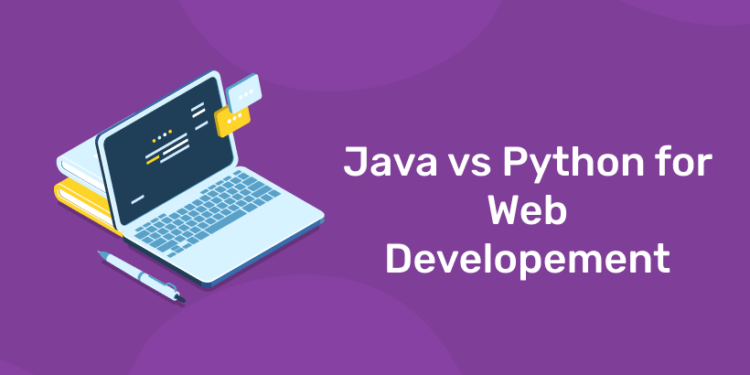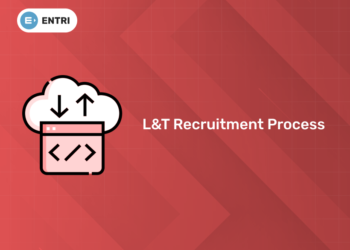Table of Contents
Programming Languages are an elemental part of computer science, they are essential tools in a programmer’s toolbox and vital to almost every programming activity. Selecting between programming languages is often confusing, let alone selecting between the most popular ones. Python and Java have been combating for the top position on the most prevalent programming languages out there, with Python making amazing improvement in the last few years and Java holding onto its position.
It often appears that these languages are perfect, and in fact, they are competent in doing most of the tasks out there, however, there are key differences that could help you develop your decision. We’ll start by describing each language and key characteristics, then compare them in the fields of web development in computer science to furnish more clarity on your choices.
Java An Overview
JAVA was created by James Gosling at Sun Microsystems Inc in the year 1991, later developed by Oracle Corporation. It is an uncomplicated programming language. Java creates writing, compiling, and debugging programming easy. It enables the creation of reusable code and modular programs.
Java is a class-based, object-oriented programming language and is organized to have a few performance dependencies as possible. A general-purpose programming language constructed for developers to write once run anywhere that is assembled Java code can run on all platforms that support Java. Java applications are collected to byte code that can run on any Java Virtual Machine. The syntax of Java is identical to c/c++.
“Ready to take your python skills to the next level? Sign up for a free demo today!”
Python An Overview
1: Which of the following data structures allows elements to be added and removed in a Last-In, First-Out (LIFO) order?
Python was first presented in 1991. Guido van Rossum designed it at the National Research Institute for Mathematics and Computer Science in the Netherlands.
This dynamically-typed programming language was developed to fulfill general objectives and be highly readable. Dynamically typed means that Python performs type checking at runtime. Its easiness to use causes Python one of the most prevalent programming languages, thus being often compared with Perl, Ruby, and of course, Java.
Overall, Python is thought a very powerful and clear object-oriented programming language. It is consistent with all operating systems, including Windows, macOS, Unix, and Linux. Plus, Python is free software. Intention, users can download and use Python for free, and the language can also be redistributed or altered freely since it is available under the GNU General Public License (GPL).
Explore Free Coding Courses!
Take your first step toward mastering in-demand skills, acing interviews, and securing top-tier jobs with Entri's free coding courses.
 Explore Free Courses Now
Explore Free Courses Now
Differences Between Java and Python
Interpreted vs Compiled languages
Python is an interpreted language, indicating it can instantly convert human-readable code into machine-readable code, creating it easier to debug and review.
Java is a compiled language. Compiled languages decode source code into machine code before running it.
Syntax
As previously noted, Python is a dynamically-typed language, and Java is statically typed. This is the most important difference between these object-oriented languages since it affects how the developer writes, designs, and troubleshoots programs.
While typing code, the developer does not need to input the variables since these are input during the runtime, causing Python a very easy and straightforward language. This causes Python also be very clear and uncomplicated to read. Another great plus is that this language does not require enclosing braces, and the code blocks are arranged according to indentation, making Python very user-friendly and intuitive.
“Experience the power of our web development course with a free demo – enroll now!”
Performance
Python and Java are cross-platform languages since they both gather bytecode and run it in virtual machines. Regardless, Java collects code in advance and allocates the bytecode, while Python tends to compile the code at runtime.
The compilation is quicker and easier than Python’s dynamic typing. Despite the formerly noted disadvantages, the static-typing syntax is less prone to errors and is more strict concerning the targeted platform, consequently improving code compilation.
Furthermore, Java also delivers a JIT (Just-in-time) compiler. This device allows the bytecode to be assembled into the native machine, which allows the compiled code to be called directly. The result is faster performance.
Python functions code during the compile-time (which is when variables are considered). When the code tracks a dynamic-typed syntax, it is not as elegant concerning compilation with every platform. Further, as stated, Python tests the syntax during the runtime, indicating that it can keep the whole application on hold if any error ensues with the program. Accordingly, both of these factors can guide to decreased language speed and efficiency.
Stability
Unlike Python, Java needs the developer to write according to strict syntax rules and have all the variables. As a result, there is more code volume, more code to review, and more code to fix. But there is a right side to this! Since everything has to be checked and confirmed before running, the code must be very well written, and, therefore, the software might be more steady and less prone to crashes.
This is why Java is usually regarded as the best option for business enterprises such as banks. Java is often very associated with conventional language for corporations. Nonetheless, Python has also been confirmed to have no trouble handling large-scale software.
To say that Java offers great software strength does not mean that Python is unstable. In comparison, certainly, big companies, such as Android, Docker, and Airbnb, include Java in their tech stack. On the other hand, it is also true that Reddit and even Instagram use Python Python as parts of their tech stack.
Speed
In Python, the product is incredibly fast due to its easiness, simplicity, and suitability to write in this language. When working against the clock, Python is most probably the best solution. Regardless, we cannot say the same about Java concerning development speed. Java projects tend to take longer and may need larger development teams.
Building an MVP (Minimum Viable Product) in Python in fact can be surprisingly fast (in a matter of weeks), while in Java, months would most likely be the case.
Python and Java are fabulous and very widespread programming languages. Despite their differences, they both stand out for their strong cross-platform support as well as for their expansive libraries. Yet, they do excel in distinct applications.
Python for Web Development
Web development is the procedure of conceptualizing, building, and sustaining websites or web applications. ‘Front end’ tasks are those that instantly affect the user and possess considerations like creating applications attractive and easy to use. ‘Backend’ tasks are those that most users never see and concern things like shuttling data between websites and servers.
Being that you can’t turn over a rock without discovering a 3rd-party Python library lurking underneath, it’s coherent to ask ‘what are the benefits of Python for web development. In this sphere, Python is almost solely used for backend, server-facing work.
This is almost permanently done with the popular Python framework Django. With its famous ‘batteries included’ direction to creating developers more effectual, Django does a lot to create backend web development easier and more efficient.
It’s not impossible to do front-end work in Python, however. Though it’s not very common, Pyjs permits you to write front-end applications in Python which are then assembled into Javascript.
“Get hands-on with our python course – sign up for a free demo!”
Java for Web Development
Since its intro by James Gosling in 1996, Java has evolved to be a stupendously successful language, employed in data science, machine learning, web development, and almost everything else.
As with Python, Java’s help in building web applications is mostly restricted to backend server-facing work. Several Java ‘ flavors’ are known for these tasks, containing Java Enterprise Edition, the Java Server Pages Standard Tag Library, and the Java Server Pages Standard Tag Library.
Where Python has one single predominant platform for backend development work, Java has many. This indicates you have lots of options for achieving whatever goal you’re currently diving but can be a little overwhelming.
Python and Java are two powerful opponents fighting for top positions concerning their rage among programming languages. Truth be told, both languages stand out for their powers to handle most computer science tasks. Thus, determining which one to go for might be thorny!
Hope this article helps you to understand something about java and python, the two different languages. The ENTRI Learning App is here to assist you in learning more about these topics.













